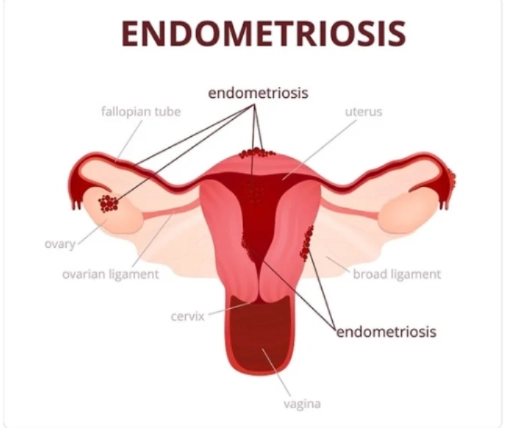Health issues are generally more common in women compared to men. From period cramps and hormonal changes to other problems you might not be aware of, endometriosis is one such condition.
Endometriosis is a common condition that affects women and can sometimes be quite painful. If you are experiencing this condition, it is best to consult an endometriosis specialist. The specialist will explain the condition in detail and guide you with the proper treatment options.
Table of Contents
What Is Endometriosis?

Endometriosis is a disorder where tissues resembling the lining of your uterus grow outside your uterine cavity.
Signs and Symptoms of Endometriosis
The symptoms of endometriosis can vary from person to person. Some people experience mild symptoms, while others may face moderate to severe pain. Sometimes, the pain can be so intense that it affects daily life.
Common Symptoms Include:
- Painful periods – Severe cramps and discomfort during menstruation.
- Infertility – Endometriosis can affect fertility.
- Cramps for 1–2 weeks – Cramps in the lower abdomen around menstruation, sometimes lasting a bit longer.
- Excess bleeding or spotting – Light bleeding or spotting between periods, though it doesn’t occur in every case.
- Lower back pain – Pain or discomfort in the back and pelvic area.
Causes of Endometriosis
For many years, the exact causes of endometriosis were not known, but several trusted theories exist.
Retrograde menstruation theory: According to this theory, during periods, blood can flow backward through the fallopian tubes instead of leaving the body. Along with this blood, endometrial cells can travel to other parts of the body and grow, which may lead to endometriosis.
Embryonic cell theory: In some people, during fetal development, embryonic cells may settle in the wrong places. Later, these cells behave like endometrial cells and can cause endometriosis.
Phases of Endometriosis
| Stage | Description |
|---|---|
| Minimal | Inflammation near the pelvic cavity, minor wounds, and shallow implants in the ovaries. |
| Mild | Light lesions and narrow implants within the ovaries and on the pelvic cavity. |
| Moderate | Several deep implants on the ovaries and pelvic lining. |
| Severe | Multiple implants on the pelvic lining and ovaries as identified by a specialist. |
Endometriosis Treatment
Your doctor can first try conservative treatments. Afterward, they may recommend surgery if the problem continues to persist. Since these treatment procedures react differently to everyone, your doctor will evaluate which one works best for you. The following are some of the medical options available to you.
- Pain medications: medications such as ibuprofen are utilized, although they are not effective in all situations.
- Conservative surgery: these are applied for the individual willing to get pregnant or to experience severe pain and have tried hormonal medication with no success.
- Hormone therapy: In some cases, taking supplements may play a role in relieving pain and averting the progression of endometriosis. This therapy enables your body to regulate monthly hormonal changes that stimulate tissue growth occurring with endometriosis.
- Last-resort surgery: This is the last option when your condition fails to improve with other medications. During the process, the surgeon will eliminate the uterus, ovaries, and cervix since these organs manufacture estrogen that can cause the growth of endometrial-looking tissues.
Risk Factors of Untreated Endometriosis
Endometriosis is a condition that can cause pain and other problems even years after your periods begin. Certain risk factors can give you an idea of whether you might develop this condition. These factors depend on age, family history, menstrual cycle, and pregnancy history.
If endometriosis goes untreated, it can lead to severe pain and affect your daily life. That’s why, if you experience extreme period pain or any unusual symptoms, it’s important to consult a specialist as soon as possible. With proper diagnosis and treatment, you can manage your symptoms and improve your quality of life.
